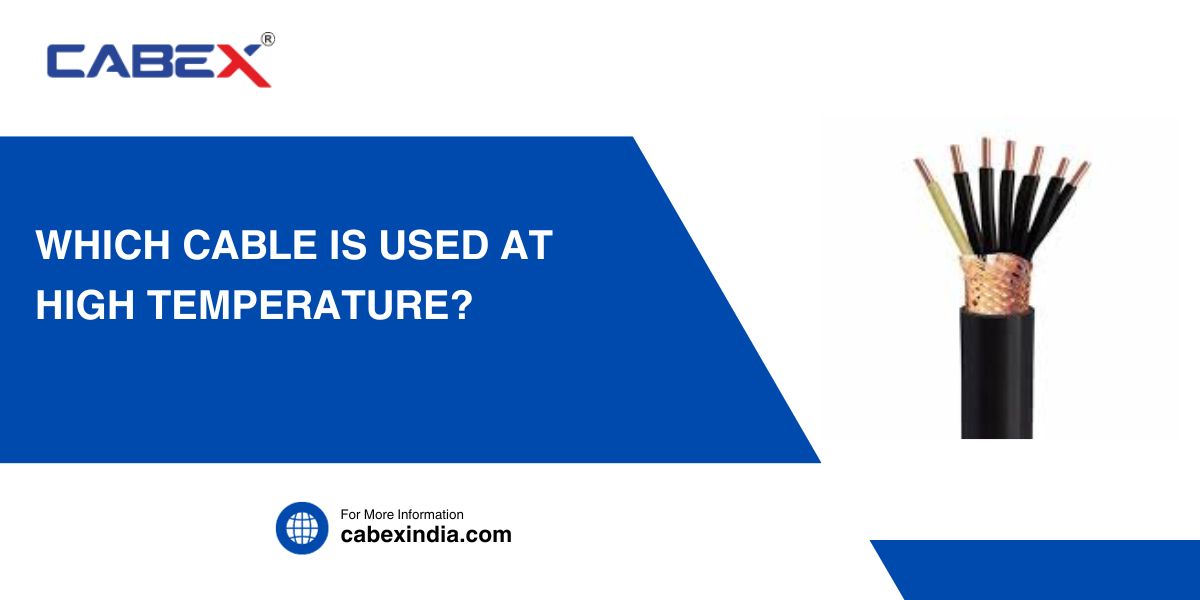Introduction
In the world of electrical wiring, one size does not fit all. Different environments and applications demand specialized cables, and when it comes to high temperatures, ordinary cables simply won't suffice. High-temperature cables are engineered to withstand extreme heat, ensuring safety and reliability in demanding situations. In this comprehensive guide, we'll delve into the world of high-temperature cables, exploring their types, applications, and advantages.
Understanding High-Temperature Cables
High-temperature cables are designed to operate safely and efficiently in environments where temperatures can reach extremes. These cables are constructed using specialized materials that offer resistance to heat, preventing insulation from melting or deteriorating. They are crucial in applications where conventional cables would fail or pose a significant safety risk.
Types of High-Temperature Cables
1.Silicone Rubber Cables
Silicone rubber cables are renowned for their exceptional thermal resistance. They can endure temperatures ranging from -60°C to 180°C (-76°F to 356°F) or even higher in some cases. These cables are highly flexible, making them ideal for applications that require frequent bending and movement, such as robotics and industrial machinery.
2. Teflon (PTFE) Cables
Teflon, also known as PTFE (Polytetrafluoroethylene), is another material used in high-temperature cables. PTFE cables can withstand temperatures ranging from -200°C to 260°C (-328°F to 500°F). They are often used in aerospace, military, and medical applications due to their excellent electrical properties and resistance to chemicals.
3. Fiberglass Cables
Fiberglass-insulated cables can handle temperatures up to 500°C (932°F). They are commonly used in extremely high-temperature environments like foundries, steel mills, and glass manufacturing facilities.
4. Mineral-Insulated Cables
Mineral-insulated cables consist of conductors surrounded by magnesium oxide (MgO) insulation and an outer metal sheath. These cables can withstand temperatures as high as 1000°C (1832°F). They are often used in critical applications such as fire survival systems and high-temperature industrial processes.
Applications of High-Temperature Cables
High-temperature cables find applications in a wide range of industries and scenarios:
1. Aerospace
Aerospace applications demand cables that can withstand extreme temperatures and harsh conditions. High-temperature cables are used in aircraft wiring, avionics, and communication systems.
2. Industrial Machinery
In industrial settings, machinery and equipment can generate significant heat. High-temperature cables are essential for connecting sensors, motors, and control systems in these environments.
3. Automotive
In the automotive industry, high-temperature cables are used in engine compartments and exhaust systems, where temperatures can soar. They ensure reliable electrical connections in these challenging conditions.
4. Foundries and Steel Mills
Foundries and steel mills operate at extremely high temperatures. Fiberglass and mineral-insulated cables are commonly employed to connect sensors and control systems.
5. Medical Equipment
High-temperature cables are used in medical devices that require sterilization or must endure high-temperature sterilization processes.
Advantages of High-Temperature Cables
High-temperature cables offer several advantages:
1. Safety
These cables are designed to prevent insulation breakdown, reducing the risk of electrical fires and malfunctions in high-heat environments.
2. Reliability
High-temperature cables provide reliable electrical connections even in extreme conditions, ensuring uninterrupted operations.
3. Longevity
When properly installed and maintained, high-temperature cables can have a longer service life than standard cables.
4. Versatility
They are available in various configurations and materials to suit different applications, making them versatile solutions for a wide range of industries.
Conclusion
High-temperature cables are indispensable in applications where exposure to extreme heat is a constant challenge. Understanding the types, applications, and advantages of these cables can help industries select the right solution to ensure safety, reliability, and efficiency in high-temperature environments. Whether in aerospace, industry, or automotive, high-temperature cables play a critical role in keeping operations running smoothly and safely.


No comments yet